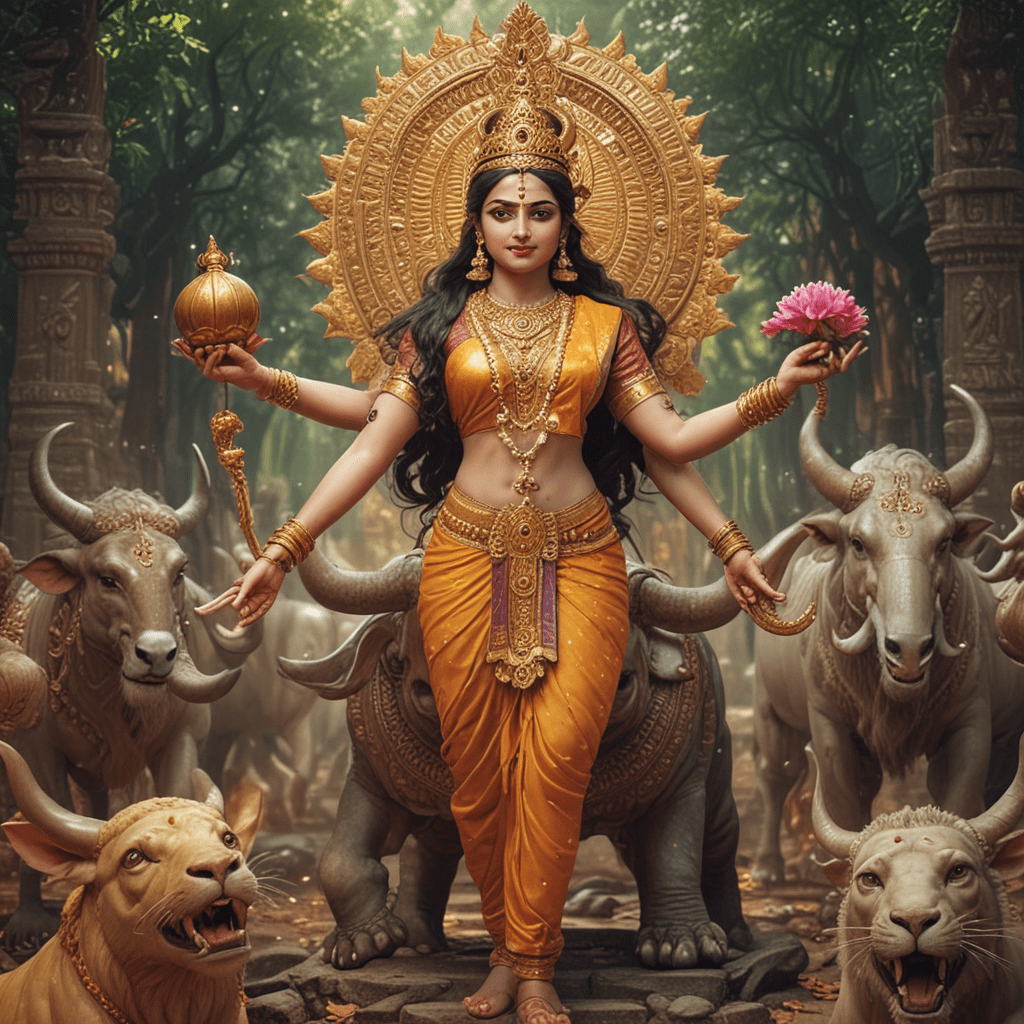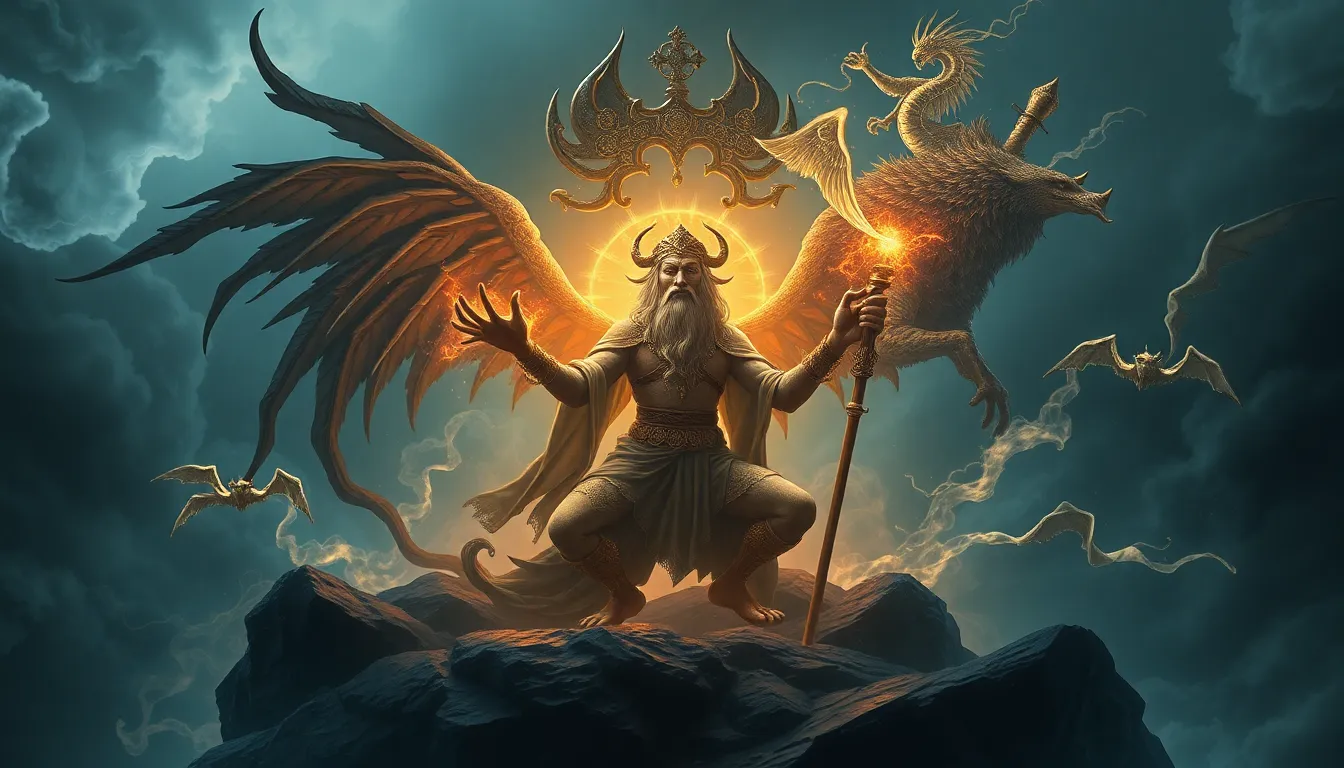The Underworld: A Mythical Journey into the Abyss of Fear
I. Introduction
The concept of the Underworld has fascinated humanity for millennia, appearing in various forms across different cultures and mythologies. It is often defined as a realm of the dead, a place where souls go after death, and is imbued with rich symbolism and meaning. The Underworld serves not only as a destination for the deceased but also as a powerful metaphor for our deepest fears and the unknown.
The significance of the Underworld in human culture and psychology is profound. It represents our anxieties about death, the afterlife, and the moral consequences of our actions. Through the exploration of fear as a central theme, we can gain insight into how these ancient narratives resonate with contemporary human experiences.
This article aims to delve into the many facets of the Underworld, examining its historical perspectives, psychological implications, and representations in literature and art, while considering how these themes continue to influence modern interpretations.
II. Historical Perspectives on the Underworld
A. The Ancient Egyptian Duat: A Journey of Judgment
In Ancient Egyptian mythology, the Duat is the Underworld where the souls of the deceased undergo judgment. Central to this process is the god Osiris, who presides over the afterlife. Upon death, the deceased’s heart is weighed against the feather of Ma’at, the goddess of truth and justice.
- Osiris and the Weighing of the Heart: If the heart is lighter than the feather, the soul is deemed worthy and granted eternal life. If heavier, it faces annihilation by the devouring monster Ammit.
- Symbolism of the Afterlife in Egyptian Culture: The Egyptians believed that the afterlife was a continuation of life on Earth, with an elaborate system of rituals designed to ensure safe passage and favorable judgment.
B. Greek Mythology: Hades and the Realm of the Dead
In Greek mythology, the Underworld is known as Hades, ruled by the god of the same name. The journey to Hades involved crossing the river Styx, guided by Charon, the ferryman.
- The Role of Charon and the River Styx: Souls required payment for passage, often provided through coins placed in the mouth of the deceased. Those who could not pay were said to wander the shores of the Styx for eternity.
- Concepts of Punishment and Reward in the Underworld: Hades was not solely a place of punishment; it also contained Elysium, a paradise for the virtuous. The duality of reward and punishment reflects the moral complexities of human existence.
C. Other Cultural Interpretations
- The Norse Helheim: In Norse mythology, Helheim is ruled by Hel, the goddess of death. It is a cold, dark realm where those who did not die a heroic death reside.
- The Hindu Naraka: In Hindu beliefs, Naraka serves as a temporary place of punishment for souls before they are reborn, illustrating the cycle of samsara and karma.
III. The Underworld as a Symbol of the Human Psyche
A. Jungian Archetypes: The Shadow Self
Psychologist Carl Jung introduced the concept of the “Shadow Self,” representing the unconscious parts of our personality that we often deny or suppress. The Underworld serves as a metaphorical space to explore these hidden aspects.
- Exploring the Unconscious Mind through Myth: Myths about the Underworld allow individuals to confront their fears and desires, facilitating personal growth and understanding.
- The Role of Fear in Personal Transformation: Engaging with our fears can lead to profound transformations, as the Underworld symbolizes the trials we face in acknowledging our Shadow.
B. The Underworld as a Metaphor for Emotional Struggles
The journey through the Underworld often mirrors our internal struggles with fear, depression, and despair.
- Facing Internal Demons and Fears: Characters in myths frequently encounter their greatest fears, symbolizing the universal human experience of confronting personal challenges.
- The Concept of ‘Dark Nights of the Soul’: This metaphor encapsulates moments of deep emotional turmoil, where individuals wrestle with despair before emerging into a new state of being.
IV. The Journey Through the Underworld: Common Themes
A. Trials and Tribulations: Overcoming Fear
Many mythological heroes undertake journeys to the Underworld, facing trials that test their resolve and character. These narratives often highlight the importance of overcoming fear.
- Archetypal Heroes and Their Descents into Darkness: Figures like Orpheus and Hercules descend into the Underworld, confronting formidable challenges that symbolize their inner fears.
- Lessons Learned from Encounters in the Underworld: Each journey often culminates in wisdom gained through hardship, illustrating that fear can be a catalyst for growth.
B. Guides and Guardians: Figures of Fear and Wisdom
In many myths, guides play a crucial role in navigating the Underworld, representing the duality of fear as both a hindrance and a source of wisdom.
- The Role of Psyche, Orpheus, and Other Mythological Guides: These characters often embody traits that help others face their fears, emphasizing the transformative power of guidance.
- The Duality of Fear as Both a Hindrance and a Teacher: Fear can paralyze, but it can also motivate heroic actions and personal revelations.
V. The Underworld in Literature and Art
A. Classic Literature: Dante’s Inferno as a Representation of Fear
Dante Alighieri’s “Inferno” is a seminal work that vividly depicts the Underworld as a place of suffering and moral reckoning.
- The Structure of Hell and Its Symbolism: Dante’s Hell is meticulously organized, with various circles representing different sins, each reflecting the fear of moral failure.
- The Journey Through Sin and Redemption: Dante’s descent serves as an allegory for the human condition, illustrating the path from despair to hope and redemption.
B. Artistic Depictions: Visualizing Fear in the Underworld
Throughout history, artists have sought to capture the essence of the Underworld, creating works that evoke fear and contemplation.
- Analysis of Famous Paintings and Sculptures: Works such as Hieronymus Bosch’s “The Garden of Earthly Delights” and Michelangelo’s “The Last Judgment” explore themes of sin, redemption, and the human soul’s journey.
- The Emotional Impact of Visual Representations of the Underworld: These artistic interpretations provoke deep emotional responses, inviting viewers to confront their fears and beliefs about life and death.
VI. Modern Interpretations of the Underworld
A. The Underworld in Contemporary Media
In modern culture, the Underworld continues to inspire films, books, and video games, often reflecting our ongoing fascination with death and the unknown.
- Films and Television: Works such as “The Matrix” and “Stranger Things” incorporate themes of alternate realities and journeys into darkness, symbolizing contemporary fears and challenges.
- Literature and Gaming: Novels like Neil Gaiman’s “American Gods” and games such as “Hades” explore the Underworld through innovative narratives, making ancient myths relevant to today’s audiences.
These modern interpretations underscore the enduring power of the Underworld as a symbol of fear, transformation, and the quest for understanding in the face of the unknown.



